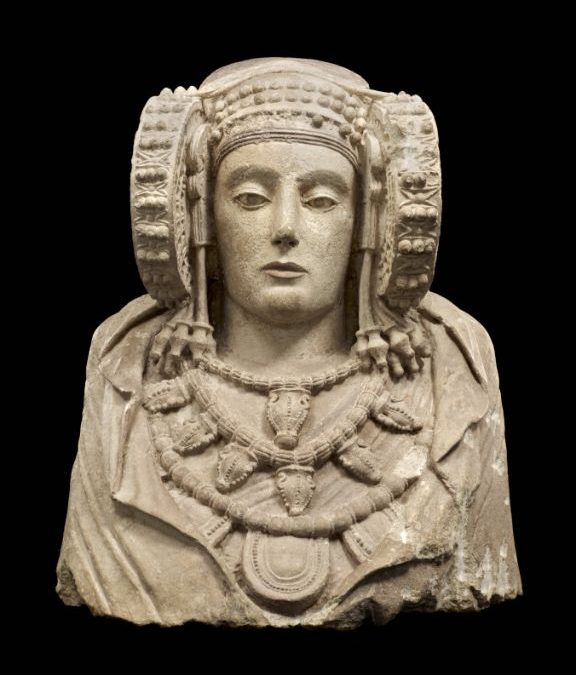El día de hoy nos adelantamos una semana para hablar del aniversario de un acontecimiento único: se cumplen 125 años del descubrimiento de la Dama de Elche. Actualmente, la pieza se encuentra en el Museo Arqueológico Nacional de España (Madrid). Sin embargo, su tocado íbero encierra numerosos destinos a lo largo de su historia.
El 4 de agosto de 1897, un agricultor de Elche (Alicante, España) llamado Manuel Campello Esclapez encontró el busto de manera casual en el Yacimiento Arqueológico de la Alcudia, antigua ciudad íbera de Ilici, que se convertiría posteriormente en la colonia romana Lulia Ilici Augusta. Este símbolo universal data de entre los siglos V y IV a.C. Está compuesta de piedra caliza e inicialmente se encontraba policromada y con los ojos rellenos de pasta vítrea.

El Museo del Louvre (París) cerró su compra y allí fue bautizada como la Dama de Elche. Sin embargo, el estallido de la II Guerra Mundial en 1939 provocó su traslado a un castillo próximo a Toulouse.
En 1941, atravesó los Pirineos para instalarse en el Museo del Prado (Madrid) y desde el acuerdo de 1972, se ha mantenido en el Museo Arqueológico Nacional, destino actual. Por otro lado, desde su partida, el busto ha visitado Elche en dos ocasiones: en 1965 (VII Centenario del Misteri) y en 2006.
Son numerosos los casos de descubrimientos casuales de este tipo de patrimonio. Por ello, debemos ser conscientes de su cuidado y garantizar su transmisión a futuras generaciones.
__
125th ANNIVERSARY OF THE DISCOVERY OF THE DAMA ELCHE
Today we are a week early to talk about the anniversary of a unique event: the 125th anniversary of the discovery of the Dama de Elche. Currently, the piece is in the Museo Arqueológico Nacional of Spain (Madrid). However, her Iberian headdress has had many destinies throughout its history.
On August 4th, 1897, a farmer from Elche (Alicante, Spain) named Manuel Campello Esclapez found the bust by chance at the Alcudia Archaeological Site, the ancient Iberian city of Ilici, which would later become the Roman colony Lulia Ilici Augusta. This universal symbol dates from between the 5th and 4th centuries BC. It is composed of limestone and was initially polychrome and with the eyes filled with vitreous paste.
The Louvre Museum (Paris) closed its purchase and there it was baptized as the Dama de Elche. However, the outbreak of World War II in 1939 caused its transfer to a castle near Toulouse.
In 1941, it crossed the Pyrenees to be installed in the Prado Museum (Madrid) and since the agreement of 1972, it has remained in the Museo Arqueológico Nacional (Spain), its current destination. On the other hand, since its departure, the bust has visited Elche twice: in 1965 (VII Centenary of the Misteri) and in 2006.
There are numerous cases of chance discoveries of this type of heritage. Therefore, we must be aware of its care and ensure its transmission to future generations.
__

